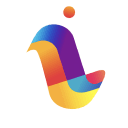Ever wondered what happens to a piece of directive, memo, or communication as it moves down the hierarchy? Despite the notion that orders must be executed to the letter, things usually don’t turn out that way. In fact, executive decisions may get altered significantly or otherwise divided up into actionable parts by the time they reach the actual frontline. So, who does the decision-making for that? Changemakers!
These are the hidden influences, leaders in the making, and showrunners influencing your business from the ranks. They are an incredible talent pool that most companies either remain unaware of or fail to nurture. This is a clear wasted opportunity since studies like this one by Deloitte demonstrate how “Using network analysis, organizations can unlock previously hidden insights around collaboration, productivity, and wellness”. Discovering changemakers through people analytics demands going beyond the veil of traditional HR metrics and standards. This is where Organizational Network Analysis is a crucial asset to every enterprise.
How Does ONA Discover and Nurture Changemakers?
Organizational Network Analytics offers a radical new approach to creating and understanding human resource performance standards. They enable businesses to correlate their workforce actions in a far more specific and nuanced capacity than standard HR metrics.
While traditional metrics only offer performance-based review options, ONA offers an incredibly layered understanding of how business teams and organizations operate. The difference lies in developing a working model for all the subtle ways people interact and collaborate vs merely looking at the result of business processing cycles at an aggregate level.
As this article from Entrepreneur.com explains, “Organizational Network Analysis (ONA) provides a structured way to visualize how communications, information, and decisions flow through an organization and is certainly a priority for people analytics teams to consider.”
This is like seeing a painting at an art gallery and seeing it broken down layer by layer through high-definition software. And what is more exciting are the ways you can use the data to make highly impactful business decisions. This is where ONA helps in identifying and creating a de facto talent pool of changemakers that drive business growth from within organizations.
There are a few telltale signs of changemakers that only pop up with ONA-style evaluations. They usually have a high degree of connectivity with other employees or superiors. And they take actions or do tasks that create a high degree of dynamism in their team or the workforce at large. But these are not the only indicators of highly influential mid-line workers. They can also have a high degree of influence in terms of human value and correlatability.
For example, changemakers who have a strong nurturing instinct often function as a mentor and are popular with their peers for mentoring roles. So, while their overall performance impact is not going to stand out, they will command a high degree of respect and influence how people work.
5 Benefits of Using Organizational Network Analytics to Discover Changemakers
Talent Nurturing
Changemakers are incredibly useful for businesses since they have a natural drive to lead and motivate other people. This might be a latent ability or something they gain over time while holding down their job role. The way businesses gain from this has to do with the organic rapport that changemakers create which cannot be replicated by new hires.
ONA algorithms create a comprehensive connectivity sitemap that helps decision-makers and execs understand which changemakers are most impactful. They also offer nuanced insights that delve into the quality of communication, floor/team sentiment, events impact, etc. This helps paint a clear picture for businesses and helps define what role changemakers are best at playing.
Further, they also create the ideal foregrounding for developing talent at the team or department level. Since changemakers often influence others because they have similar tendencies or traits, developing level-wide talent nurturing programs becomes easier. This helps mid-level managers forward changemakers and also make the most of their direct and influence-based skills.
In many cases, changemakers, if identified early, benefit from specialized learning which helps them branch out into specific career paths. This may enable executives to segment their processes while also keeping the broad goal of business expansion on track.
Feeling TLDR? Get he fastest highlights of this blog right here!
But do think of reading it through! We packed it full of great insights!
Team Development
Changemakers are adept at motivating and influencing others. This may be within their team and in some cases, outside of their team or department as well. When such a situation develops, managers would like to have more interactions to gauge their cross-department collaboration potential. For example, as this Forbes article mentions, “From tailoring learning and educational programs to match employee skills and strengths to providing insight into common pain points in the business, people analytics can help create a highly tailored employee experience.” Often, one team has some influence or impact on how another team functions.
A good example is a software development team and a visual design or graphic/multimedia development. The cross-section of these two produces the specialization of UI/UX design from the creative perspective. So, developing the skill of a software developer with a creative approach could help create the ideal marketing campaign process. Conversely, if the changemaker is a graphic design expert, then they could delve into UI/UX and help create better interface solutions.
This could open up the possibility of having other graphic designers specialize in UI/UX development too. In fact, since customer experience directly impacts marketing, cross-sectional expertise in software development and visual representation has many applications including din-app data presentation, user engagement, app use time, etc.
Further, the team that works with the changemaker adopts emerging in-house skills and takes up pivotal roles in the development process. And the result is a highly-skilled team that has a talent edge to leverage in the market which many others may not have the expertise to match.
Influence Assay
Changemakers are very versatile in their skill sets. These most often include hard skills like software development or technical skills like business analysis and then soft skills like communication, leadership, and interpersonal motivation. Using ONA helps executives make a clear read of what kind of influence the changemaker has. If they are impacting other team members with their skills, then their capacity is more leaning towards technicality. If they are a strong leading figure then they have a managerial aptitude. Usually, it’s a cross-section of both or some correlated skill set that enables high productive output.
By understanding how changemakers are fostering higher impact or productivity, executives stand to gain a lot of insights. This involves not just the changemaker but also all those they are affecting. Moreover, they can understand the specifics of how these employees are doing better and advance their skills in tandem with their influential changemakers.
Connectivity assays also help develop a strong networking opportunity for other influences across the organizations. It helps in breaking down silos and creating robust organizational ties. This leads to multi-vertical skill development, collaboration opportunities, and overall better organizational health.


Mentoring Opportunities
Changemakers offer executives a window into their organization’s workforce drives like no one else. When they make the connections they do and ONA reveals their patterns, they create dynamic mentoring opportunities. Depending on the connection groupings and their underlying motivations, executives can discover a lot of hidden opportunities for growing their team. These range from potential changemakers, super connectors, quiet contributors, and even toxic employees who may need a PIP or removal.
In all of these scenarios, understanding where to leverage mentoring assets or invest in high-value instructional media makes a tremendous degree of difference. Since mentoring is always a time-sensitive activity, early recognition of potential and talent may give businesses a significant advantage. They will also help increase performance review accuracies bringing up more areas for improvement and opportunities for growth.
Further, executives can plan for ongoing mentoring programs using ONA data on changemakers. A particularly strong showing in any area may open up new avenues for business. This is particularly true for business markets in high growth and evolution timeframes. A good example is coding with many coding jobs now getting increasingly automated the need is for more dynamic and diverse skills. This may include store management PR liaison or any other skills associated with coding and publishing apps. Executives can use ONA and changemakers to combine their best expertise into an effective skill development package and drive their business to success.


Succession Planning
One of the biggest challenges all HR firms face has to do with planning for the succession of roles at all levels. Since changemakers offer the chance to not only dynamize operations but also potentially steer company processes in better directions, they are a great asset. This is particularly true when they are identified early with ONA platforms and can then be given specialized conditioning and mentoring. In many cases, changemakers would then evolve into leaders very rapidly and provide businesses with a ready resource to rely on to fill roles. This also makes the job of the HR team a whole lot easier since they can now plan according to the growth patterns visible via ONA in their teams.
Does ONA Hold the Future for Business Changemakers and Leaders?
Organizational network Analysis goes several steps beyond the traditional mantra of KPIs and OKRs. It brings sophisticated people management processes and enables businesses to truly manage their human resource assets at the human level. Interpersonal communication, human development possibilities, and holistic engagement help drive innovation and performance much further than traditional HR systems can. This is why ONA is enable to transform businesses, particularly with talent identification like with changemakers.
LEAD.bot is a team engagement platform for big businesses and MNCs on Slack and Teams. It is an all-in-one team development software with features like virtual coffee chats, buddy programs, birthday celebrations & work anniversary celebrations, new hire onboarding programs, and Pulse Surveys.
LEAD.bot also offers cutting-edge Organizational Network Analysis (ONA) for large-scale organizations. C-suite execs and mid-level managers benefit greatly in their decision-making from ONA and use its highly actionable insights for building strong connections across their workforce. This enables far more forward-leaning talent development and generates greater organizational interconnectedness! Foster better organizational health, talent development, employee retention, and overall performance with this simple app!
LEAD.bot is a product of LEAD.app and we also LEAD.bot’s sister app Sunrize which showcases workplace attendance by graphs right on Slack! Book a demo now!












